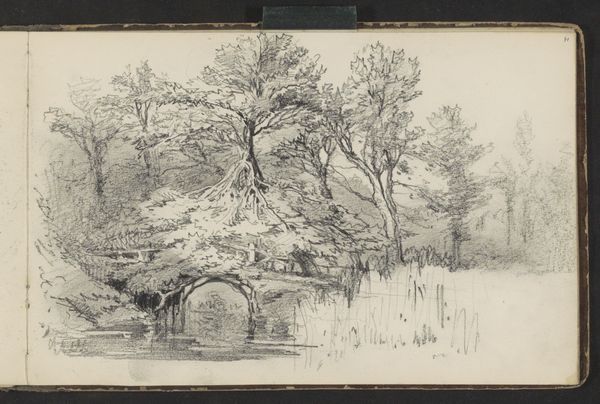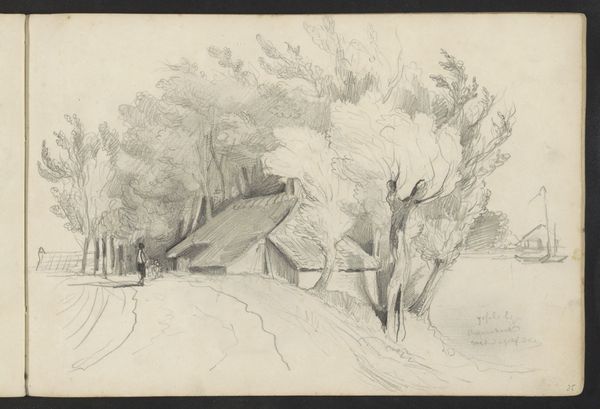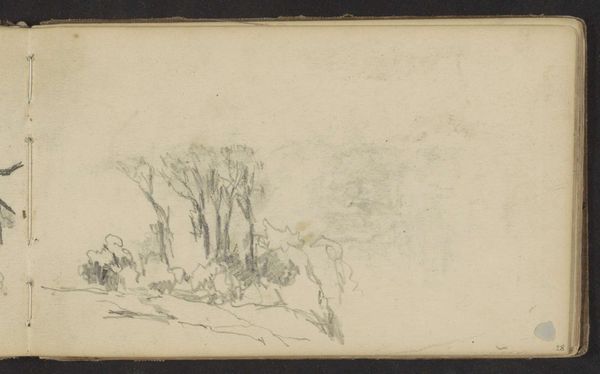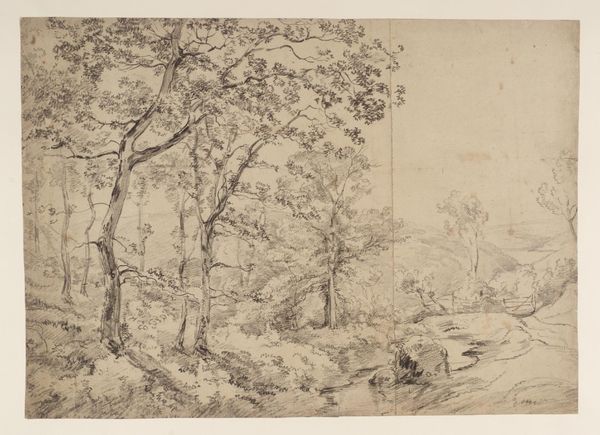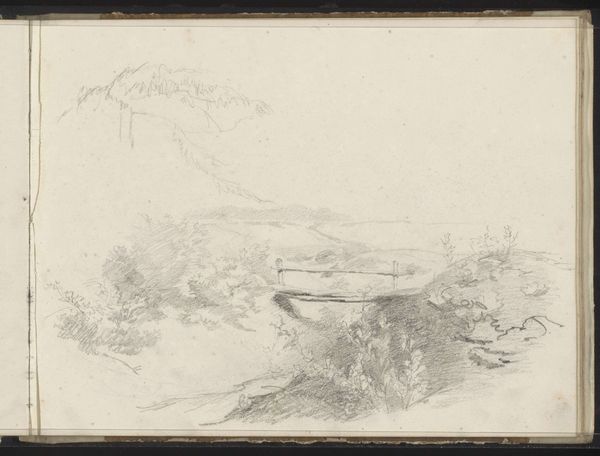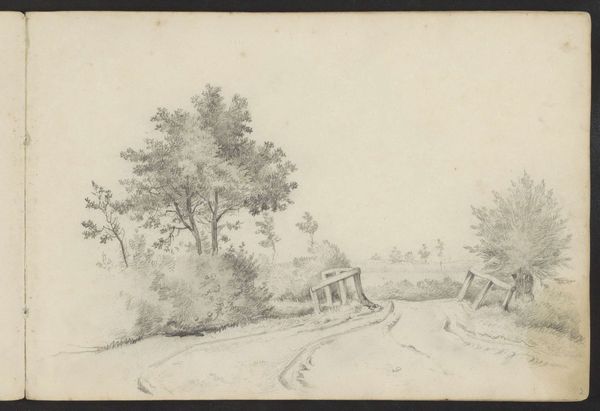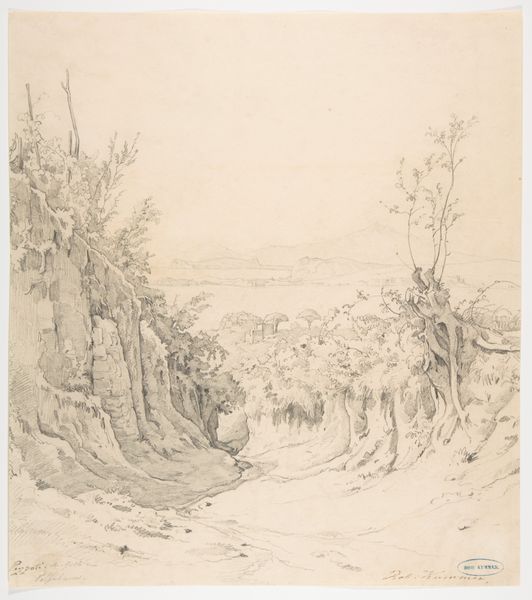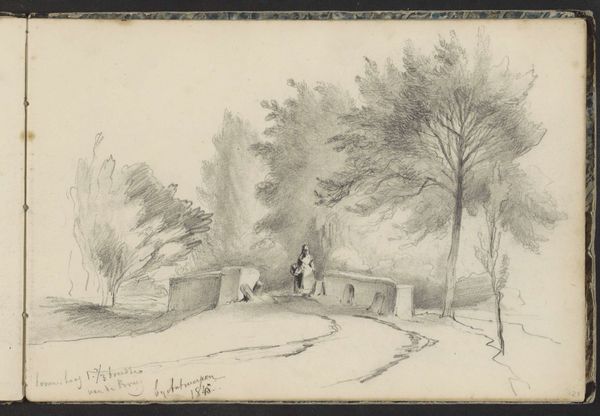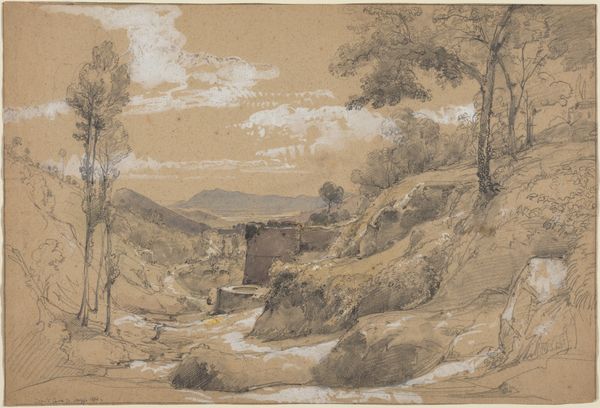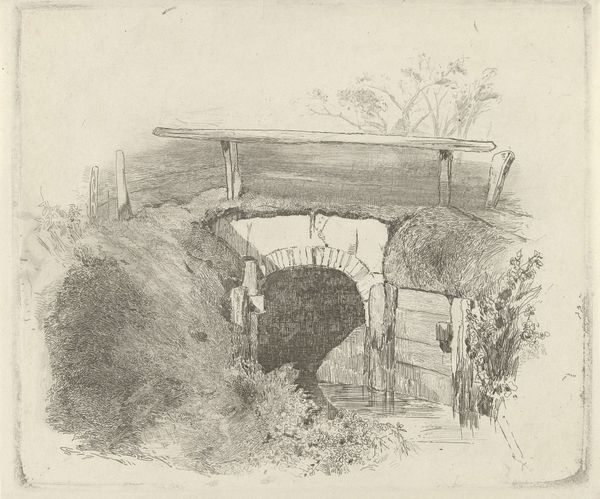
Copyright: Rijks Museum: Open Domain
Curator: Here we have "Stone Bridge near Nothgottes" by Johannes Tavenraat. It's an ink and watercolor drawing, created sometime between 1861 and 1869. It resides here at the Rijksmuseum. Editor: It’s rather somber, isn't it? The monochromatic palette creates a very hushed atmosphere. It almost feels like a memory fading. The loose brushstrokes also create soft, unfocused shapes, especially in the trees. Curator: Indeed. Tavenraat's focus here is primarily on form and tonality. Notice how the varying shades of ink create depth and volume. The architectural solidity of the bridge anchors the ethereal landscape. There's a clear visual hierarchy created by its placement. Editor: And this placement lends to its meaning as well, the bridge existing, or existing still in the picture's present. Bridges historically have a tremendous socio-political valence—facilitating commerce and connecting disparate communities. Curator: But look closer; it's a ruined bridge. Tavenraat uses romantic, picturesque tropes, presenting a melancholic meditation on time and decay. The loose lines contrast with the structure itself. It brings it all together, harmonizing a narrative of nature reclaiming man-made architecture. Editor: Perhaps it even touches upon themes of empire and inevitable collapse, depending on how you contextualize "Nothgottes" at the time of this rendering, and depending on the symbolism that Tavenraat ascribed to ruins. We can trace these kinds of images as cultural texts, indicative of that era’s sentiments regarding nationalism and legacy. Curator: I agree that it suggests broader themes beyond pure landscape appreciation. And from a formal standpoint, it displays a mastery of line and wash technique to evoke mood and atmosphere that many find accessible, in order to contemplate historical conditions as you mentioned. Editor: Precisely! It’s quite evocative. Thanks to the harmony of lines, shadow and light that contribute a complex view of this composition’s historical background.
Comments
No comments
Be the first to comment and join the conversation on the ultimate creative platform.

